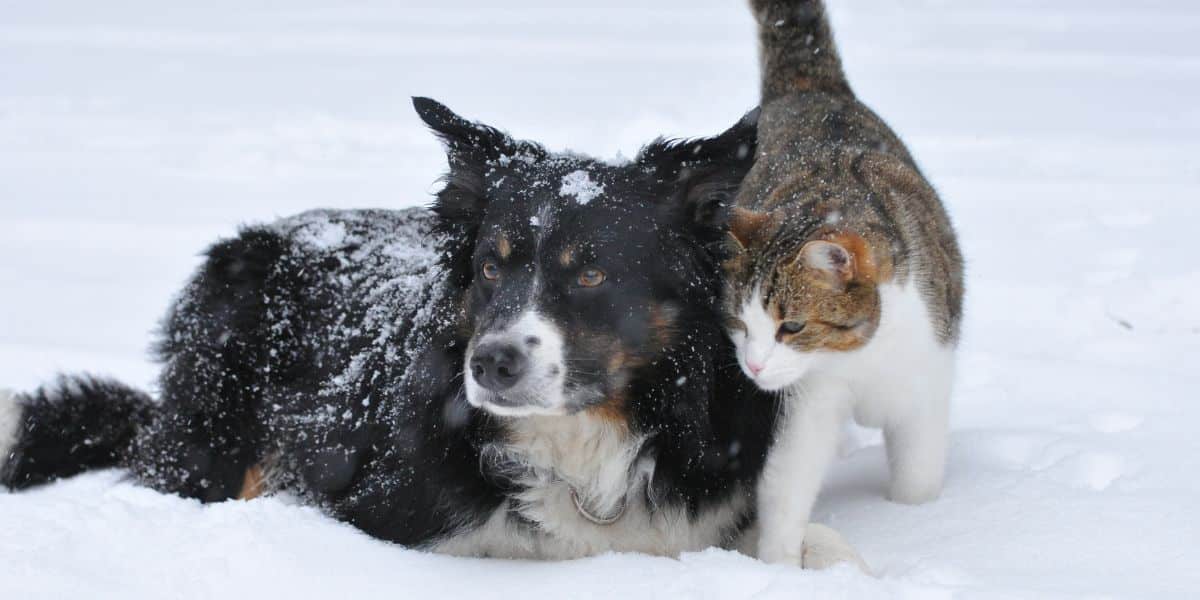The chilly months of winter can present unique challenges for our beloved pets. As the temperatures drop, it’s crucial to take proactive measures to ensure their safety and well-being. The harsh weather conditions can lead to various health risks, from hypothermia to frostbite. To help you navigate this challenging season, here are 7 essential tips for protecting your furry companions during extreme cold.
Keep Them Indoors
One of the most effective ways to prevent cold-related health issues is to keep your pets indoors during extreme weather conditions. When temperatures plummet, it’s important to create a cozy environment for your animals. Indoor spaces not only offer warmth but also protection from biting winds and icy rains. If your pets need to go outside for bathroom breaks, try to limit these excursions to brief moments.
Monitor Their Grooming
Maintaining your pet’s coat is essential in winter. Regular grooming helps keep their fur healthy and insulated. However, over-bathing can strip vital oils from their fur, leading to dryness and irritation. If your pet tends to need frequent baths, consult your veterinarian for recommendations concerning moisturizing shampoos suitable for winter. An adequately cared-for coat acts as a barrier against cold, helping your pet stay warm.
Protect Their Paws
Your pet’s paws are particularly vulnerable during winter. The combination of ice, snow, and salt on sidewalks can irritate their sensitive pads, leading to cracking and injuries. After outdoor adventures, make it a habit to clean your pet’s paws thoroughly. Additionally, consider using pet-safe booties or paw balms to protect their feet from harsh elements and chemicals commonly used to melt ice on the roads.
Watch for Signs of Hypothermia
Both dogs and cats can suffer from hypothermia when exposed to extreme cold. Learn to recognize the warning signs, which include shivering, lethargy, and difficulty walking. Should your pet show any symptoms of hypothermia, it’s essential to act quickly. Wrap them in warm blankets, provide warm (not hot) liquids, like chicken broth, and contact your veterinarian if the symptoms persist.
Limit Outdoor Time
While some pets enjoy playing in the snow, it’s important to limit their outdoor time during extremely cold weather. Make sure they are monitored closely outside, especially if they seem to be in discomfort. Animals such as small dogs or those with short coats are more sensitive to low temperatures. If your pet displays signs of being uncomfortable, such as whining or shivering, bring them indoors immediately.
Hydration and Nutrition
Just because winter is here doesn’t mean your pet does not need hydration. Pets can become dehydrated in colder months, just like in warm weather. Ensure that your pet always has access to fresh, clean water and observe their diet to ensure they are receiving all necessary nutrients to maintain their energy levels during cold weather. In some cases, a vet may suggest increasing your pet’s caloric intake to help them stay warm.
Be Cautious of Antifreeze
During the winter, it’s crucial to be diligent about the substances your pets are exposed to, particularly antifreeze, which can be lethal to animals. This toxic liquid often spills on driveways and streets, and its sweet taste can entice pets to lick it. Make sure to clean any spills thoroughly and keep your pets away from areas where antifreeze might accumulate. If you suspect your pet has ingested any antifreeze, contact your veterinarian immediately.
Frequently Asked Questions
How can I tell if my pet is too cold? Look for signs such as shivering, whining, or curling up to stay warm. If your pet seems anxious or continues to try to come back inside, they might be too cold.
What temperatures are considered too cold for my pet? Generally, temperatures below 20°F (-6°F) can be risky for many pets, especially small dogs, puppies, elderly dogs, and those with thin coats.
Are there any specific breeds that are more susceptible to cold? Yes, smaller breeds, short-haired dogs, and older dogs are typically more sensitive to cold temperatures.
By applying these essential tips, you can ensure that your pets remain safe and comfortable throughout the winter months. Protecting our furry friends from extreme weather is essential, and understanding their needs will help them thrive even in the coldest conditions. Make these precautions a part of your winter routine to guarantee your pets’ safety and well-being during the colder months.
As the winter months unfold, it is vital to keep a watchful eye on our beloved pets. Following these streamlined tips will not only enhance their safety but also create a loving, warm environment where they can feel secure. Remember, pets are not just animals; they are family. Regularly visiting for more tips on care and ensuring their health will instill confidence in your abilities as a pet owner. Stay tuned for more articles that dive into various topics, including astrology and horoscopes, and don’t forget to share your love for our furry friends with others!





